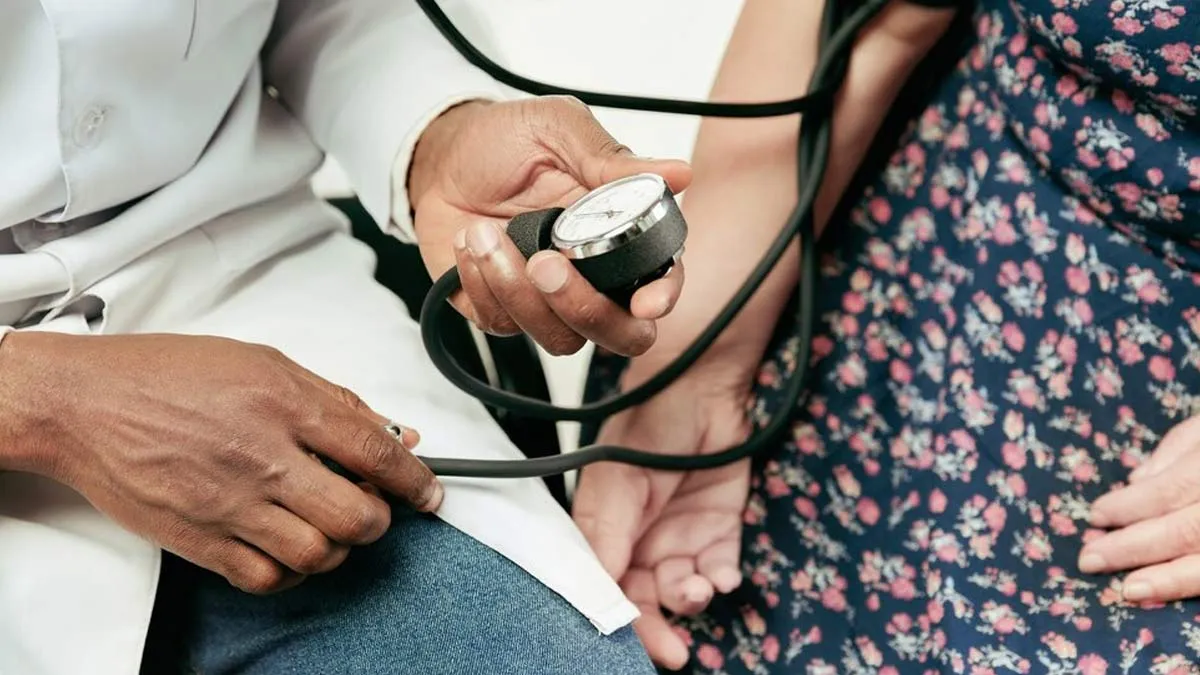
Giving birth is a life-changing experience, often filled with joy, relief, and anticipation for the future. But for some women, the postpartum journey can include unexpected health challenges—one of which is postpartum hypertension. While it may sound alarming, understanding this condition can go a long way in helping new mothers manage and even prevent it.
Table of Content:-
What Is Postpartum Hypertension?
In an exclusive interaction with the editorial team of Onlymyhealth, our expert, Dr Shrey Srivastav, Senior Consultant and General Physician, Sharda Hospital - Noida, explained that postpartum hypertension refers to high blood pressure that occurs after childbirth, typically within the first few days or weeks following delivery. It can affect women who had normal blood pressure during pregnancy, as well as those who experienced gestational hypertension or preeclampsia before giving birth.
Blood pressure is considered high when consistently measures 140/90 mmHg or higher. In the postpartum period, this can become a serious health issue if left unchecked, potentially leading to complications like seizures (eclampsia), stroke, or organ damage.
What Causes Postpartum Hypertension?
There isn’t a single cause but rather a combination of factors that may contribute to the development of postpartum high blood pressure:
1. Preeclampsia Carryover
If a woman had preeclampsia (a condition characterised by high blood pressure and signs of organ damage) during pregnancy, the symptoms may persist or even worsen after delivery.

2. Fluid Retention
During childbirth, especially after a C-section or when receiving IV fluids, the body can retain excess fluid. This sudden shift in volume can raise blood pressure levels.
3. Hormonal Shifts
Postpartum hormonal changes—especially the sharp drop in pregnancy-related hormones—can affect blood vessel function and blood pressure regulation.
4. Stress and Lack of Sleep
Caring for a newborn is no small task. The combination of physical recovery, emotional stress, and sleep deprivation can trigger or worsen hypertension.
5. Underlying Medical Conditions
Conditions such as obesity, diabetes, or kidney disease may increase the risk of developing postpartum hypertension.
What Are the Symptoms?
Postpartum hypertension can be asymptomatic, which is why routine monitoring is so important. When symptoms do appear, they may include:
Severe headaches
Blurred vision or sensitivity to light
Swelling in the hands, feet, or face
Shortness of breath
Nausea or upper abdominal pain
Sudden weight gain
If any of these symptoms arise, it's critical to seek medical attention right away.

Also Read: Can High Blood Pressure Make You Breathless?
How Is It Diagnosed?
Diagnosis involves regular blood pressure monitoring, especially within the first six weeks after delivery. A blood pressure reading of 140/90 mmHg or higher on two separate occasions typically signals a problem.
Doctors may also order lab tests to check kidney and liver function, as well as urine tests to detect protein—a sign of preeclampsia or related complications.
Prevention and Management
While postpartum hypertension can’t always be prevented, there are steps you can take to lower your risk and manage it effectively:
Know Your Risk
If you had high blood pressure during pregnancy or have other risk factors, inform your healthcare provider so they can closely monitor you after delivery.
Monitor Your Blood Pressure at Home
Home blood pressure monitors can be invaluable tools. Keep a log of your readings and share them with your provider.
Stay Active and Eat Smart
Focus on a diet rich in fruits, vegetables, lean proteins, and whole grains. Limit salt and processed foods. Gentle postpartum exercises, like walking or yoga, can help regulate blood pressure.
Get Enough Rest
It’s easier said than done with a newborn, but try to rest when you can. Fatigue and stress can significantly raise blood pressure.
Take Medications If Prescribed
Some women may need blood pressure medications temporarily. These are often safe for breastfeeding mothers, but always consult your doctor first.
When to Seek Emergency Help
Call your doctor or go to the emergency room immediately if you experience:
Chest pain
Severe headache that doesn’t go away
Difficulty breathing
Vision changes
Seizures
These could be signs of severe hypertension or postpartum preeclampsia, a rare but serious complication.
Bottomline
Postpartum hypertension is a serious condition, but it’s also highly manageable with the right care and awareness. By staying informed, monitoring your health, and seeking timely medical attention, you can enjoy a safer and healthier recovery after childbirth.
Remember: Your well-being matters just as much as your baby's. Don’t hesitate to ask for help, and always advocate for your health during this critical period.
Also watch this video
How we keep this article up to date:
We work with experts and keep a close eye on the latest in health and wellness. Whenever there is a new research or helpful information, we update our articles with accurate and useful advice.
Current Version